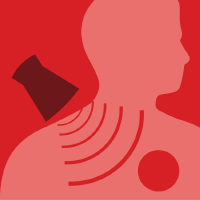Topic Editors


Applications of Polymers and Polymer Nanomaterials in Drug Delivery and Nanomedicine

Topic Information
Dear Colleagues,
The focus of modern pharmaceutical science is aimed at the possibility for control, extension, sustaining, and targeting of the bioactive compounds. Moreover, the efforts are intended to overcome the limitations of the drugs itself, such as decreasing its toxicity and side effects, its instabilities, and unwanted changes. In the field of drug delivery science, polymers have seen significant progress. They provide the possibility for development of delivery systems of higher hierarchical order owing to their unique properties on a molecular and supramolecular level. Their possibility for improvement of the pharmacokinetic properties of drugs is practically unrestricted. This topics is an attempt to summarize recent progress in the knowledge of drug delivery systems based on hydrogels, micro- and nanosized gels, biodegradable polymers, stimuli-responsive systems, polymer and polymer-hybrd nanoparticles, etc., in the development of alternative formulations and administration routes. The evolution of polymer based delivery systems of large molecules as well as biomolecules also will be addressed.
Prof. Dr. Stanislav Rangelov
Dr. Emi Haladjova
Topic Editors
Keywords
- biodegradable polymers
- polymer and polymer-hybrid nanoparticles
- hydrogels
- microgels
- nanopharmaceutics
- controlled release
- targeted therapy
- gene delivery
Participating Journals
| Journal Name | Impact Factor | CiteScore | Launched Year | First Decision (median) | APC | |
|---|---|---|---|---|---|---|

Biomedicines
|
3.9 | 5.2 | 2013 | 15.3 Days | CHF 2600 | Submit |

Journal of Nanotheranostics
|
- | - | 2020 | 14.6 Days | CHF 1000 | Submit |

Pharmaceutics
|
4.9 | 7.9 | 2009 | 14.9 Days | CHF 2900 | Submit |

Polymers
|
4.7 | 8.0 | 2009 | 14.5 Days | CHF 2700 | Submit |

Nanomaterials
|
4.4 | 8.5 | 2010 | 13.8 Days | CHF 2900 | Submit |

Pharmaceuticals
|
4.3 | 6.1 | 2004 | 12.8 Days | CHF 2900 | Submit |

Biophysica
|
- | 1.6 | 2021 | 17.7 Days | CHF 1000 | Submit |

MDPI Topics is cooperating with Preprints.org and has built a direct connection between MDPI journals and Preprints.org. Authors are encouraged to enjoy the benefits by posting a preprint at Preprints.org prior to publication:
- Immediately share your ideas ahead of publication and establish your research priority;
- Protect your idea from being stolen with this time-stamped preprint article;
- Enhance the exposure and impact of your research;
- Receive feedback from your peers in advance;
- Have it indexed in Web of Science (Preprint Citation Index), Google Scholar, Crossref, SHARE, PrePubMed, Scilit and Europe PMC.

